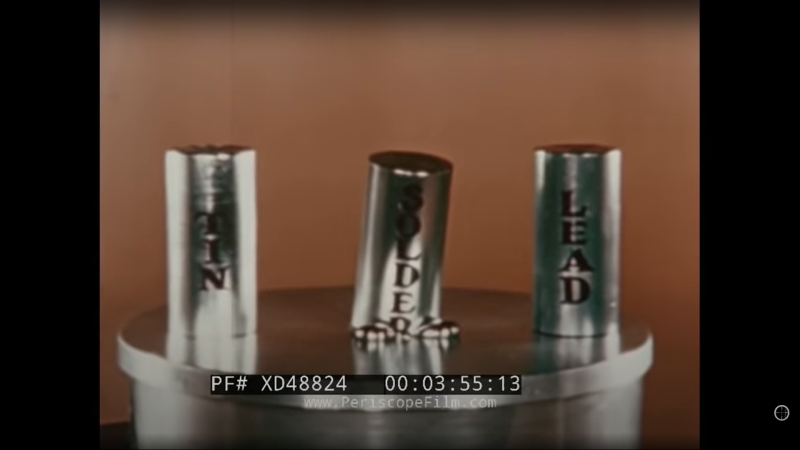Community, Leadership, Experimentation, Diversity, & Education
Pittsburgh Arts, Regional Theatre, New Work, Producing, Copyright, Labor Unions,
New Products, Coping Skills, J-O-Bs...
Theatre industry news, University & School of Drama Announcements, plus occasional course support for
Carnegie Mellon School of Drama Faculty, Staff, Students, and Alumni.
CMU School of Drama
Wednesday, April 13, 2022
NASA Hardware Techniques: Soldering Space Electronics Like It’s 1958
Hackaday: [PeriscopeFilms] on YouTube has many old TV adverts and US government reels archived on their channel, with some really interesting subjects to dive in to. This first one we’re highlighting here a 1958 film about NASA Soldering Techniques (Video, embedded below), which has some fascinating details about how things were done during the Space Race, and presumably, continue to be done.
Subscribe to:
Post Comments (Atom)

4 comments:
This is so freaking cool. I find the intersection of technical theatre and the work of NASA to be extremely fascinating, in what few ways they intersect. Their soldering work really is absolute perfection as they repeatedly stress in the video and the article. It is a one time shot with no real ways to fix any problems that might arise with the craftmanship and execution of the soldering. Especially all the way back in 1958 where there were far fewer ways to ensure a satisfactory job due to AI. Honestly, I know I am in school for theater and I am definitely going into theater as a professional but it has always been a pipe dream to work for NASA or some organization that deals with space in an exploratory way. I also love old timey videos explaining how to do something, 1950s instructional videos are so interesting to see how people thought at the time so this video scratches a very particular itch for me.
Ben loves to talk about how the level of skill and precision between our industry and heavy industries such as aerospace is like a great rift essentially. While we care about being precise in our work we really are operating on a completely different level of tolerances in comparison to aerospace or heavy civil projects.
It's cool to see some of the stuff he talks about in class mentioned here, such as how crucial it is to keep your materials and tools clean when working with metals to cause as little contamination in the welds/solders as possible.
Agreed on old instructional videos being fascinating. It's cool seeing how things were explained in an almost omniscient narrator kind of fashion. I also love that the narrator at one point is just like "yeah man this alloy melts at a lower temperature than it's constituent metals but fuck me if I know why. But don't worry about that. Look at how it melts!"
I enjoy whenever we as makers of theatre pull back for just a moment and everything we do is revealed as a bit flimsy. Every time I’m learning about new pieces of hardware there’s very often the conversation about which versions do what, and why we use, often, versions that are easier to use and less expensive rather than very permanent, mor expensive, or more time consuming versions. We’ve gotten good and doing what is necessary to be done in the short time frames we have and working around that while some larger, more permanent projects like NASA here who’s work can be a lot more dangerous and a whole lot more expensive if something goes wrong needs to have this extra level of safety, I’m not sure 100% how critical doing all of these steps is for them but I understand why they have made this level of accuracy prt of their protocol.
Like Martin mentioned, as soon as I started reading this article I started to think of how Ben always talks about how we do things in the entertainment industry compared to the real world, and how flimsy and unprecise we can be compared to such serious projects like ones by NASA that go into space. It's funny how we adopt so many techniques and equipment used in such larger industries, and convert them to a use in theater and other forms of entertainment. Reading this article and skimming through the video, I thought it was so crazy that NASA still uses hardware techniques from 1958. I just watched the video on the guy that paints thin lines on cars, and it is crazy to me that we as a society resort to those precise people who have developed such mastery in a skill to do things rather than a machine or computer. It goes to show how incredible humans can be and what we can accomplish.
Post a Comment